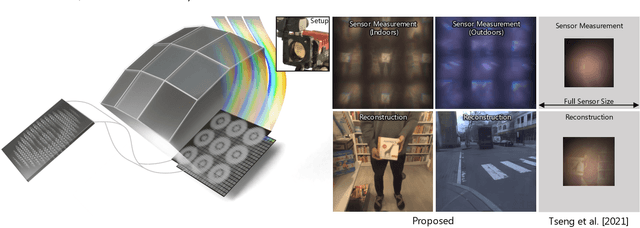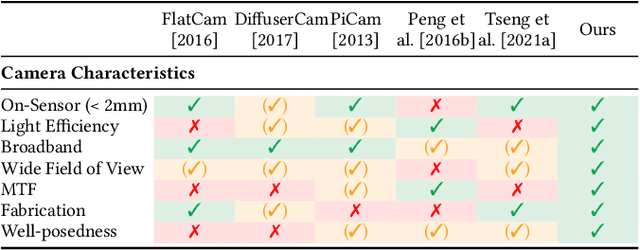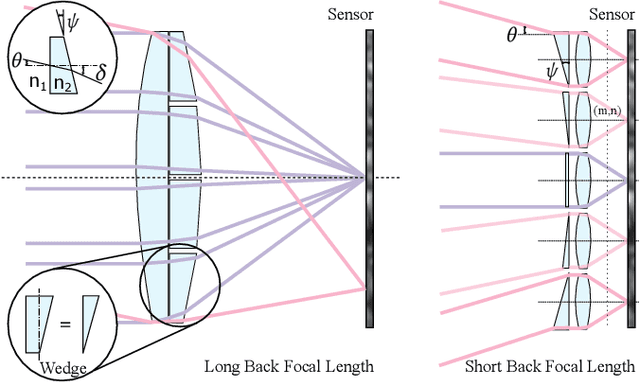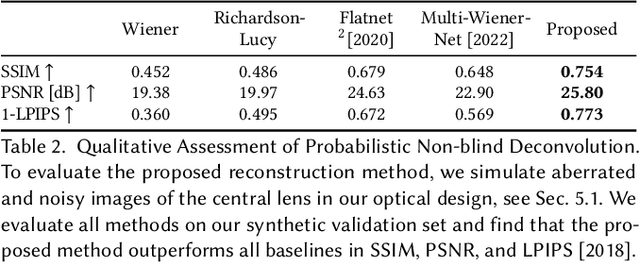Thin On-Sensor Nanophotonic Array Cameras
Paper and Code
Aug 05, 2023



Today's commodity camera systems rely on compound optics to map light originating from the scene to positions on the sensor where it gets recorded as an image. To record images without optical aberrations, i.e., deviations from Gauss' linear model of optics, typical lens systems introduce increasingly complex stacks of optical elements which are responsible for the height of existing commodity cameras. In this work, we investigate \emph{flat nanophotonic computational cameras} as an alternative that employs an array of skewed lenslets and a learned reconstruction approach. The optical array is embedded on a metasurface that, at 700~nm height, is flat and sits on the sensor cover glass at 2.5~mm focal distance from the sensor. To tackle the highly chromatic response of a metasurface and design the array over the entire sensor, we propose a differentiable optimization method that continuously samples over the visible spectrum and factorizes the optical modulation for different incident fields into individual lenses. We reconstruct a megapixel image from our flat imager with a \emph{learned probabilistic reconstruction} method that employs a generative diffusion model to sample an implicit prior. To tackle \emph{scene-dependent aberrations in broadband}, we propose a method for acquiring paired captured training data in varying illumination conditions. We assess the proposed flat camera design in simulation and with an experimental prototype, validating that the method is capable of recovering images from diverse scenes in broadband with a single nanophotonic layer.
 Add to Chrome
Add to Chrome Add to Firefox
Add to Firefox Add to Edge
Add to Edge